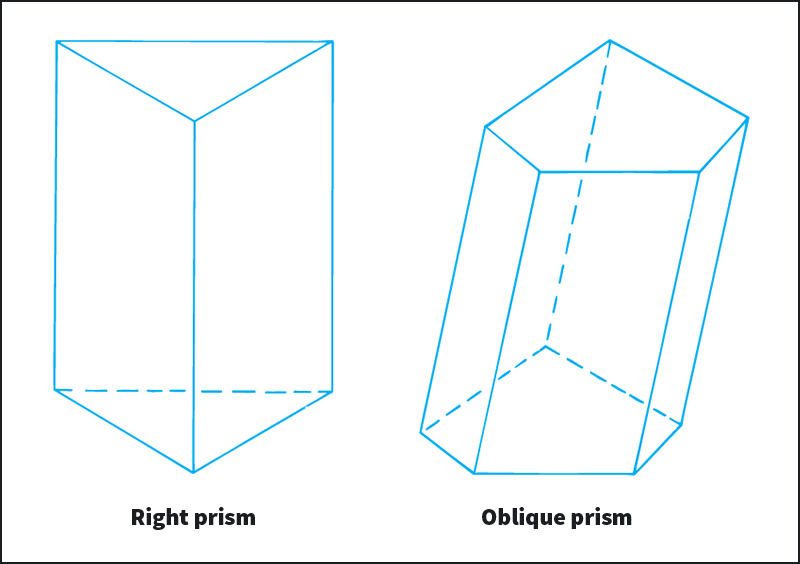Prism is a solid with two parallel bases joined by three or more lateral surfaces (sides). The bases are identical polygons. The lateral surfaces are parallelograms. Transparent prisms are widely used in optics. They are usually made of glass, quartz, or the mineral calcite, but they may be made of other materials, such as plastic.

There are many types of prisms. The simplest prism has triangular bases and three sides. In a right prism, the lateral surfaces are perpendicular to the bases. Prisms that do not have this property are called oblique prisms.
Prisms are used in a variety of instruments to change the direction of a beam of light. For example, periscopes contain right prisms that reflect light at a right angle to its original direction. Prisms can also be used to reverse an image, making it appear backward or upside down.
Prisms also can change the direction of a beam of light by means of refraction–that is, they can bend the light as it enters and exits them. The angle at which light is refracted depends on its wavelength. Different colors of light have different wavelengths. If a beam of white light, which contains all the wavelengths of visible light, passes through a prism, it is split up to form a band of colors called a spectrum. For this reason, prisms are an important part of spectrometers and other instruments that are used to measure the spectral composition of light.
See also Color (The relation between color and light) ; Light ; Polygon ; Refraction ; Spectrometer ; Spectrum .
